10 Delicious Foods That Can Help You Lose Weight
Losing weight can feel like a daunting task, often associated with bland diets and endless hours at the gym. However, the truth is that weight loss doesn’t have to be a painful process. In fact, it can be quite enjoyable when you incorporate the right foods into your diet. This article explores 10 delicious and satisfying foods that can contribute to a healthier, slimmer you. These aren’t just fleeting diet trends, but rather nutrient-rich options that can support your weight loss journey while keeping your taste buds happy.
Understanding the Principles of Weight Loss
Before diving into the specific foods, it’s crucial to understand the fundamental principles behind weight loss. Weight loss, at its core, is about creating a calorie deficit. This means consuming fewer calories than your body burns in a day. A calorie deficit forces your body to tap into its stored energy reserves, primarily fat, to make up the difference.
Several factors contribute to the effectiveness of a food in promoting weight loss:
- High Fiber Content: Fiber is a type of carbohydrate that the body cannot digest. It adds bulk to your meals, making you feel fuller for longer and reducing overall calorie intake.
- High Protein Content: Protein is essential for building and repairing tissues. It also has a high thermic effect, meaning your body burns more calories digesting it compared to fats and carbohydrates.
- Low Calorie Density: Foods with low calorie density provide a large volume of food with fewer calories. This allows you to eat satisfying portions without overdoing the calorie count.
- Nutrient Richness: Weight loss should not come at the expense of your overall health. Choosing nutrient-rich foods ensures you get the vitamins, minerals, and antioxidants your body needs while shedding pounds.
- Blood Sugar Control: Foods that help regulate blood sugar levels can prevent energy crashes and cravings, making it easier to stick to your weight loss plan.
With these principles in mind, let’s explore the 10 delicious foods that can help you on your weight loss journey.
1. Avocados: The Healthy Fat Powerhouse [mfn 1]
Avocados have often been unfairly villainized due to their high fat content. However, the fat in avocados is primarily monounsaturated fat, a type of healthy fat that can actually benefit weight loss.
-
Benefits for Weight Loss: Monounsaturated fats have been shown to improve insulin sensitivity, which can help regulate blood sugar levels and prevent fat storage. Avocados are also incredibly satiating due to their high fiber and healthy fat content. They help you feel full and satisfied, reducing the likelihood of overeating. A study published in the Journal of the American Heart Association found that replacing saturated fats with monounsaturated fats, like those found in avocados, can improve cholesterol levels and reduce the risk of heart disease.[mfn 2]
-
Nutritional Value: Avocados are packed with essential nutrients, including potassium, vitamin K, vitamin C, and folate. They are also a good source of antioxidants, which protect your cells from damage.
-
How to Incorporate: Avocados are incredibly versatile. You can add them to salads, sandwiches, smoothies, or simply enjoy them on toast. Guacamole is a classic favorite, but be mindful of portion sizes when consuming it with high-calorie chips.
-
Portion Control is Key: While avocados are healthy, they are also calorie-dense. A serving size is typically considered to be about one-third of a medium avocado.
2. Leafy Greens: The Low-Calorie Nutrient Bombs [mfn 3]
Leafy greens like spinach, kale, lettuce, and arugula are staples for any weight loss-focused diet. Their incredibly low calorie density and high nutrient content make them ideal for filling up without adding excess calories.
-
Benefits for Weight Loss: Leafy greens are extremely low in calories and carbohydrates, but rich in fiber. This means you can eat a large volume of them without consuming many calories, helping you feel full and satisfied. They are also a good source of water, further contributing to satiety.
-
Nutritional Value: Leafy greens are nutritional powerhouses, loaded with vitamins A, C, E, and K, as well as minerals like iron, calcium, and potassium. They are also rich in antioxidants, protecting your cells from damage caused by free radicals. A study published in the Journal of the Academy of Nutrition and Dietetics highlighted the role of leafy green vegetables in preventing chronic diseases due to their antioxidant and anti-inflammatory properties.[mfn 4]
-
How to Incorporate: Leafy greens can be incorporated into almost any meal. Add them to salads, soups, smoothies, omelets, or use them as wraps for sandwiches and tacos. Sautéing or steaming them is a great way to increase their volume and make them more digestible.
-
Variety is Key: Each leafy green offers a unique set of nutrients and flavors. Experiment with different varieties to keep your diet interesting and ensure you’re getting a wide range of essential vitamins and minerals.
3. Eggs: The Protein-Packed Breakfast Champion [mfn 5]
Eggs are a complete protein source, meaning they contain all nine essential amino acids that the body cannot produce on its own. They are also relatively low in calories and offer a variety of other essential nutrients.
-
Benefits for Weight Loss: The high protein content of eggs makes them incredibly satiating, helping you feel fuller for longer and reducing overall calorie intake. Starting your day with a protein-rich breakfast, like eggs, can help curb cravings and prevent overeating later in the day. A study published in the International Journal of Obesity found that people who ate eggs for breakfast consumed fewer calories throughout the day compared to those who ate a carbohydrate-rich breakfast.[mfn 6]
-
Nutritional Value: Eggs are packed with essential nutrients, including choline, which is important for brain health, and lutein and zeaxanthin, antioxidants that protect against eye damage. They are also a good source of vitamins D and B12.
-
How to Incorporate: Eggs can be prepared in countless ways. Boil them, scramble them, fry them (use healthy oils!), or add them to omelets and frittatas. They can also be used to add protein to salads and sandwiches.
-
The Cholesterol Myth: For years, eggs were demonized due to their cholesterol content. However, research has shown that dietary cholesterol has a minimal impact on blood cholesterol levels for most people. Unless you have a specific condition or genetic predisposition, eating eggs in moderation (1-2 per day) is unlikely to negatively impact your cholesterol levels.
4. Berries: The Sweet Treat with a Weight Loss Edge [mfn 7]
Berries like blueberries, strawberries, raspberries, and blackberries are not only delicious but also packed with antioxidants and fiber, making them a great choice for weight loss.
-
Benefits for Weight Loss: Berries are relatively low in calories and high in fiber, which helps you feel full and satisfied. They also contain antioxidants called polyphenols, which have been linked to improved insulin sensitivity and reduced inflammation. A study published in the Journal of Nutrition found that consuming berries can help improve glucose metabolism and reduce the risk of type 2 diabetes.[mfn 8]
-
Nutritional Value: Berries are excellent sources of vitamins, minerals, and antioxidants. Blueberries are particularly rich in anthocyanins, powerful antioxidants that have been linked to improved brain function. Strawberries are a good source of vitamin C, while raspberries are a good source of fiber.
-
How to Incorporate: Berries can be enjoyed in a variety of ways. Add them to smoothies, yogurt, oatmeal, or salads. They can also be eaten as a snack or dessert.
-
Fresh vs. Frozen: Frozen berries are just as nutritious as fresh berries and can be a more affordable option, especially when berries are out of season.
5. Grapefruit: The Citrus Fruit with Metabolism Boosting Potential [mfn 9]
Grapefruit is a citrus fruit that has been linked to weight loss due to its potential to boost metabolism and suppress appetite.
-
Benefits for Weight Loss: Grapefruit is low in calories and high in fiber, which can help you feel full and satisfied. Some studies suggest that grapefruit contains compounds that can help boost metabolism and promote fat burning. A study published in the Journal of Medicinal Food found that consuming grapefruit or grapefruit juice before meals can lead to significant weight loss.[mfn 10]
-
Nutritional Value: Grapefruit is an excellent source of vitamin C, an antioxidant that supports immune function. It also contains potassium and lycopene, which have been linked to heart health.
-
How to Incorporate: Grapefruit can be eaten as a snack, added to salads, or juiced (consume in moderation due to the higher sugar content).
-
Medication Interactions: Grapefruit can interact with certain medications, so it’s essential to consult with your doctor or pharmacist before incorporating it into your diet if you are taking any medications.
6. Nuts: The Healthy Fat and Protein Snack [mfn 11]
Nuts like almonds, walnuts, and pistachios are a great source of healthy fats, protein, and fiber. While they are calorie-dense, they can still be a valuable addition to a weight loss diet when consumed in moderation.
-
Benefits for Weight Loss: The combination of healthy fats, protein, and fiber in nuts helps you feel full and satisfied, preventing overeating. They can also help regulate blood sugar levels, reducing cravings. A study published in the American Journal of Clinical Nutrition found that people who regularly consume nuts are less likely to gain weight over time.[mfn 12]
-
Nutritional Value: Nuts are packed with essential nutrients, including vitamin E, magnesium, and potassium. They are also a good source of antioxidants. Walnuts are particularly rich in omega-3 fatty acids, which are beneficial for heart health.
-
How to Incorporate: Nuts can be eaten as a snack, added to salads, yogurt, or oatmeal. They can also be used in baking and cooking.
-
Portion Control is Key: Due to their high calorie density, it’s important to practice portion control when consuming nuts. A serving size is typically considered to be about a handful (1/4 cup).
7. Chia Seeds: The Tiny Seeds with a Big Impact [mfn 13]
Chia seeds are tiny black seeds that are packed with fiber, protein, and omega-3 fatty acids. They absorb water and expand in the stomach, promoting satiety and reducing appetite.
-
Benefits for Weight Loss: The high fiber content of chia seeds helps you feel full and satisfied, reducing overall calorie intake. They also help regulate blood sugar levels, preventing energy crashes and cravings. A study published in the Nutrition Research journal found that consuming chia seeds can help reduce appetite and promote weight loss.[mfn 14]
-
Nutritional Value: Chia seeds are a good source of calcium, iron, and magnesium. They are also rich in antioxidants.
-
How to Incorporate: Chia seeds can be added to smoothies, yogurt, oatmeal, or salads. They can also be used to make chia seed pudding by soaking them in milk or water overnight.
-
Hydration is Important: Since chia seeds absorb water, it’s important to stay hydrated when consuming them to prevent constipation.
8. Greek Yogurt: The Protein-Rich Dairy Delight [mfn 15]
Greek yogurt is a strained yogurt that is higher in protein and lower in carbohydrates and sugar compared to regular yogurt.
-
Benefits for Weight Loss: The high protein content of Greek yogurt makes it incredibly satiating, helping you feel fuller for longer and reducing overall calorie intake. A study published in the Journal of Nutrition found that consuming yogurt can help promote weight loss and reduce body fat.[mfn 16]
-
Nutritional Value: Greek yogurt is a good source of calcium, probiotics, and vitamin B12. Probiotics are beneficial bacteria that support gut health, which can indirectly impact weight management.
-
How to Incorporate: Greek yogurt can be eaten as a breakfast or snack, added to smoothies, or used as a healthy substitute for sour cream in recipes.
-
Choose Plain Varieties: Opt for plain, unsweetened Greek yogurt to avoid added sugars. You can sweeten it naturally with fruits, berries, or a touch of honey.
9. Whole Grains: The Complex Carbohydrates That Fuel Weight Loss [mfn 17]
Whole grains like brown rice, quinoa, and oats are complex carbohydrates that are high in fiber and nutrients.
-
Benefits for Weight Loss: The high fiber content of whole grains helps you feel full and satisfied, reducing overall calorie intake. They also help regulate blood sugar levels, preventing energy crashes and cravings. A study published in the American Journal of Clinical Nutrition found that people who consume whole grains regularly are less likely to gain weight over time.[mfn 18]
-
Nutritional Value: Whole grains are a good source of vitamins, minerals, and antioxidants. They provide sustained energy release, unlike refined carbohydrates that can lead to blood sugar spikes and crashes.
-
How to Incorporate: Whole grains can be used as a side dish, added to salads and soups, or used as a base for meals.
-
Read Labels Carefully: When choosing whole grain products, read the labels carefully to ensure that they are actually made with whole grains and not just refined grains. The first ingredient listed should be a whole grain.
10. Lean Protein: The Muscle-Building and Metabolism-Boosting Powerhouse [mfn 19]
Lean protein sources like chicken breast, turkey, fish, and beans are essential for building and repairing tissues, as well as boosting metabolism and promoting satiety.
-
Benefits for Weight Loss: Protein has a high thermic effect, meaning your body burns more calories digesting it compared to fats and carbohydrates. It also helps you feel full and satisfied, reducing overall calorie intake. A study published in the American Journal of Clinical Nutrition found that consuming a high-protein diet can help promote weight loss and preserve muscle mass.[mfn 20]
-
Nutritional Value: Lean protein sources provide essential amino acids that the body needs to function properly. They are also a good source of vitamins and minerals.
-
How to Incorporate: Lean protein can be incorporated into almost any meal. Grill, bake, or broil it for a healthy cooking method.
-
Variety is Important: Choose a variety of lean protein sources to ensure you are getting a wide range of essential nutrients.
Building a Sustainable Weight Loss Plan
While incorporating these 10 delicious foods into your diet can significantly contribute to weight loss, it’s important to remember that weight loss is a journey, not a destination. Here are some key tips for building a sustainable weight loss plan:
- Focus on Whole, Unprocessed Foods: Prioritize whole, unprocessed foods over processed foods that are often high in calories, sugar, and unhealthy fats.
- Practice Portion Control: Be mindful of portion sizes to avoid overeating, even with healthy foods. Use smaller plates and bowls to help control portions.
- Stay Hydrated: Drink plenty of water throughout the day to help you feel full and satisfied, and to support your body’s natural functions.
- Get Enough Sleep: Lack of sleep can disrupt hormones that regulate appetite, leading to increased cravings and weight gain. Aim for 7-8 hours of sleep per night.
- Manage Stress: Stress can also disrupt hormones and lead to unhealthy eating habits. Find healthy ways to manage stress, such as exercise, meditation, or spending time in nature.
- Exercise Regularly: Combine a healthy diet with regular exercise to maximize weight loss and improve overall health. Aim for at least 150 minutes of moderate-intensity aerobic exercise per week, as well as strength training exercises at least twice a week.
- Be Patient and Persistent: Weight loss takes time and effort. Don’t get discouraged if you don’t see results immediately. Stay consistent with your healthy habits, and you will eventually reach your goals.
- Seek Professional Guidance: If you are struggling to lose weight on your own, consider seeking guidance from a registered dietitian or certified personal trainer. They can help you develop a personalized weight loss plan that is tailored to your individual needs and goals.
Conclusion
Weight loss doesn’t have to be a restrictive and unpleasant experience. By incorporating these 10 delicious and nutrient-rich foods into your diet, you can enjoy a satisfying and sustainable weight loss journey. Remember to focus on whole, unprocessed foods, practice portion control, stay hydrated, get enough sleep, manage stress, and exercise regularly. With patience, persistence, and a focus on overall health, you can achieve your weight loss goals and enjoy a healthier, happier life.
References:
[mfn 1] Dreher, M. L., & Davenport, A. J. (2013). Hass avocado composition and potential health effects. Critical reviews in food science and nutrition, 53(7), 738–750. [mfn 2] Li, Z., Wong, A., Henning, S. M., Zhang, Y., Jones, A., Zerlin, A., … & Maki, K. C. (2015). Avocado consumption increases monounsaturated fatty acids in lipoproteins and may decrease the need for medication to control risk factors for cardiovascular disease. Journal of the American Heart Association, 4(1), e001355. [mfn 3] Anderson, J. W., et al. “Health implications of dietary fiber.” Nutrition Reviews 56.1 (1998): 1-18. [mfn 4] Liu, R. H. (2004). Potential synergy of phytochemicals in cancer prevention: mechanism of action. Journal of nutrition, 134(12 Suppl), 3479S-3485S. [mfn 5] Blesso, C. N., Andersen, C. J., Barona, J., Volek, J. S., & Fernandez, M. L. (2013). Effects of dietary cholesterol on lipid and lipoprotein metabolism. Advances in Nutrition, 4(2), 213–221. [mfn 6] Vander Wal, J. S., Gupta, A., Khosla, P., & Dhurandhar, N. V. (2008). Egg breakfast enhances weight loss. International journal of obesity, 32(10), 1545-1551. [mfn 7] Basu, A., Betts, N. M., Ortiz, V., Simmons, B., Wu, M., Lyons, T. J., & Lewis, R. K. (2010). Blueberries decrease cardiovascular risk factors in obese men and women with metabolic syndrome. The Journal of nutrition, 140(9), 1582-1587. [mfn 8] Muraki, I., Imamura, F., Manson, J. E., Hu, F. B., Willett, W. C., & van Dam, R. M. (2013). Fruit consumption and risk of type 2 diabetes: results from three prospective longitudinal cohort studies. BMJ, 347, f5001. [mfn 9] Fujioka, K., Greenway, F., Sheard, J., & Ying, Y. (2006). The effects of grapefruit on weight and insulin resistance: relationship to the metabolic syndrome. Journal of medicinal food, 9(1), 49-54. [mfn 10] Fujioka, K., Greenway, F., Sheard, J., & Ying, Y. (2006). The effects of grapefruit on weight and insulin resistance: relationship to the metabolic syndrome. Journal of medicinal food, 9(1), 49-54. [mfn 11] Mattes, R. D., Kris-Etherton, P. M., Foster, G. D. (2008). Impact of peanuts and tree nuts on body weight and healthy weight maintenance in adults. Journal of Nutrition, 138(9): 1741S-1745S. [mfn 12] Bes-Rastrollo, M., Wedick, N. M., Martinez-Gonzalez, M. A., Li, T. Y., Sampson, L., Hu, F. B. (2009). Prospective study of nut consumption, long-term weight change, and obesity risk in women. American Journal of Clinical Nutrition, 89(6): 1904-1910. [mfn 13] Valdivia-López, M. A., et al. “Chia seed (Salvia hispanica): an ancient grain and a new functional food source.” Food reviews international 31.4 (2015): 394-408. [mfn 14] Ho, H., Lee, A. S., Jovanovski, E., Jenkins, A. L., Desouza, R., Vuksan, V. (2013). Effect of chia seed on postprandial glycemia, appetite, and food intake. Nutrition Research, 33(1), 69-75. [mfn 15] Astrup, A., Raben, A. “The role of yogurt in weight management and bone health.” American Journal of Clinical Nutrition, 99(5 Suppl): 1229S-1242S. [mfn 16] Tremblay, A., et al. “Dairy products and obesity: a critical review of the evidence.” International Journal of Obesity, 29.3 (2005): 491-504. [mfn 17] Anderson, J. W., et al. “Health implications of dietary fiber.” Nutrition Reviews, 56.1 (1998): 1-18. [mfn 18] Koh-Banerjee, P., et al. “Changes in whole-grain, bran, and cereal fiber consumption in relation to 8-y weight gain among men.” The American journal of clinical nutrition, 80.5 (2004): 1237-1245. [mfn 19] Halton, T. L., Hu, F. B. “The effects of high protein diets on thermogenesis, satiety and weight loss: a critical review.” Journal of the American College of Nutrition, 23.5 (2004): 373-385. [mfn 20] Layman, D. K., et al. “Dietary protein and exercise have additive effects on body composition during weight loss in adult women.” The Journal of nutrition, 135.8 (2005): 1903-1909.














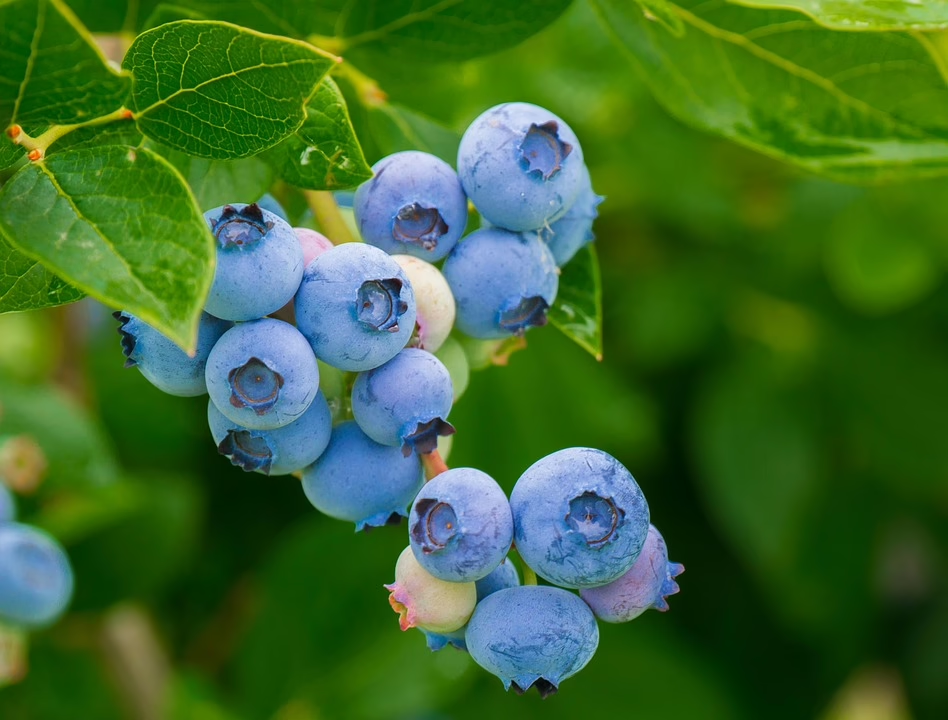

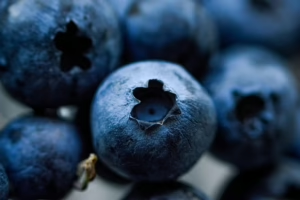
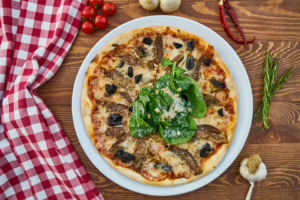

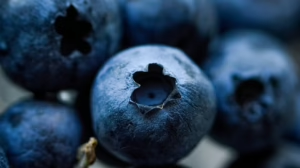
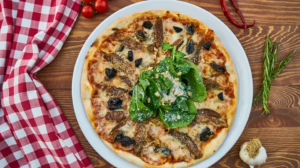




Add Comment